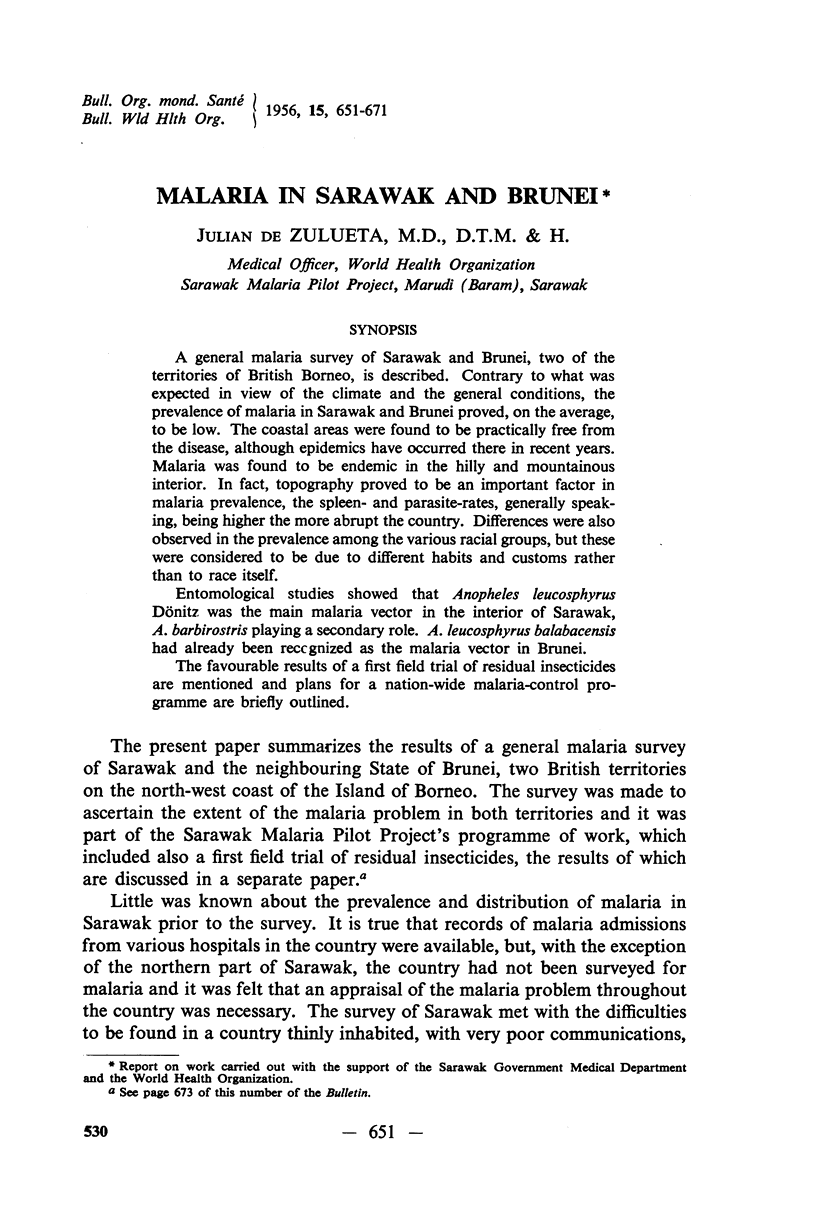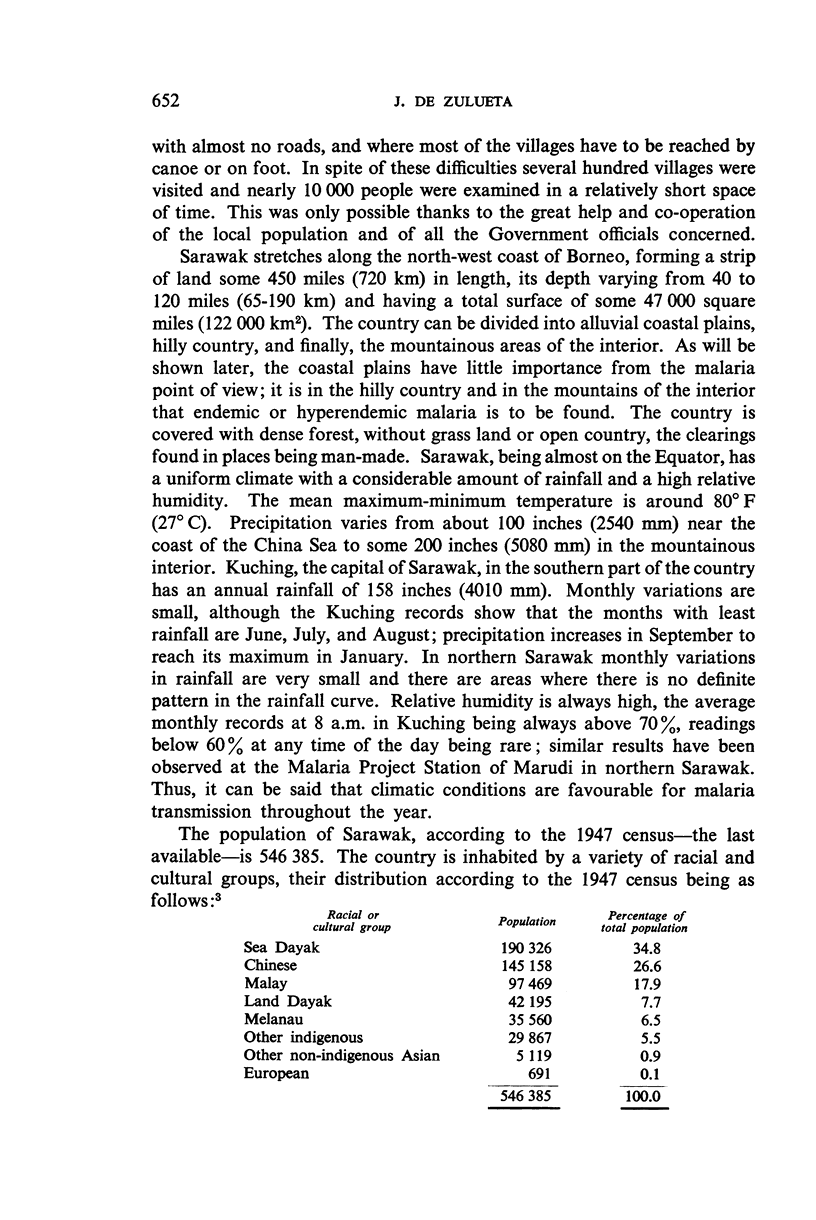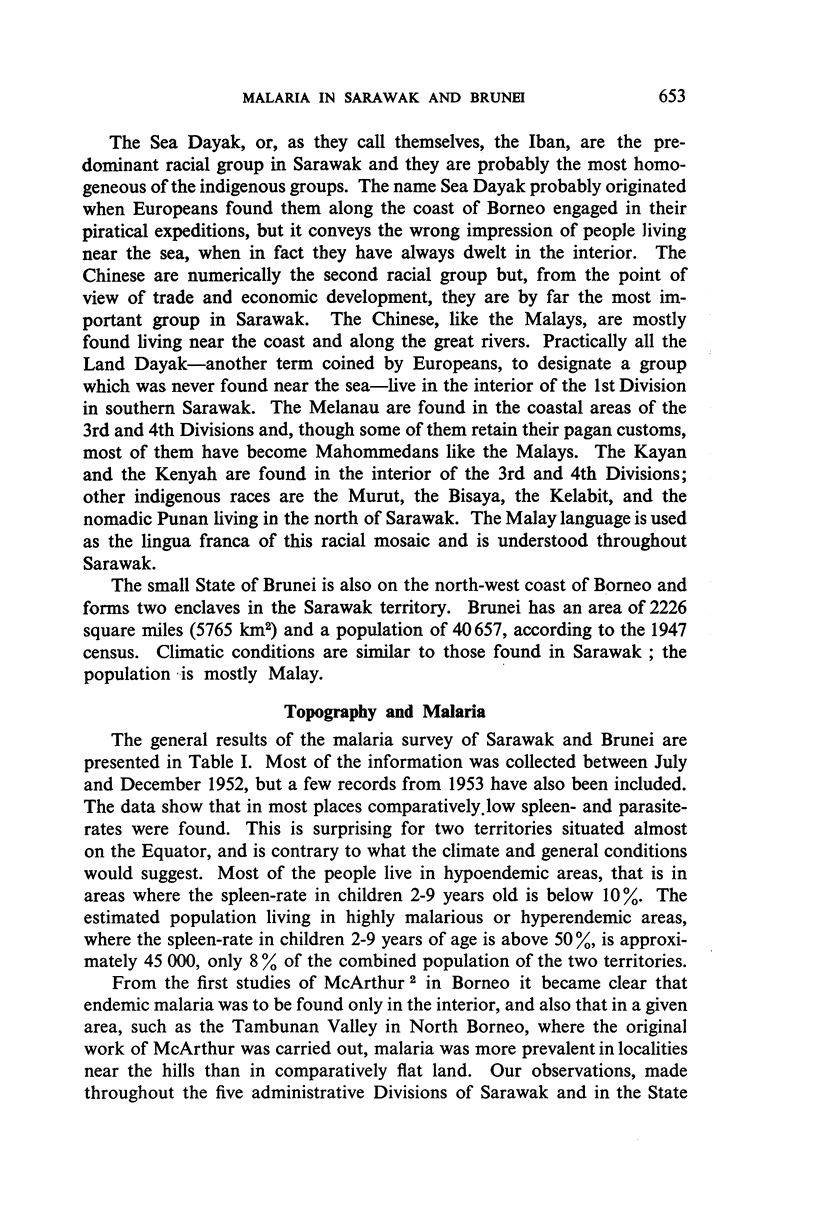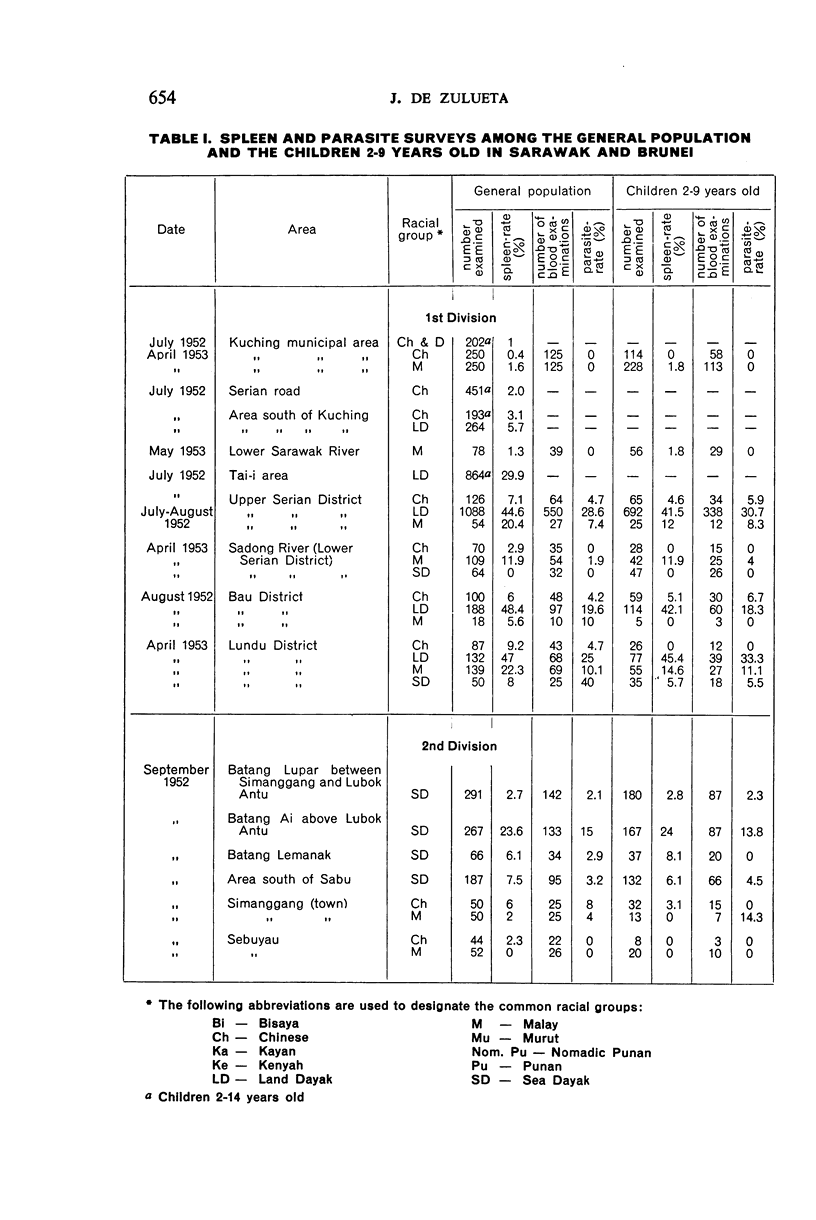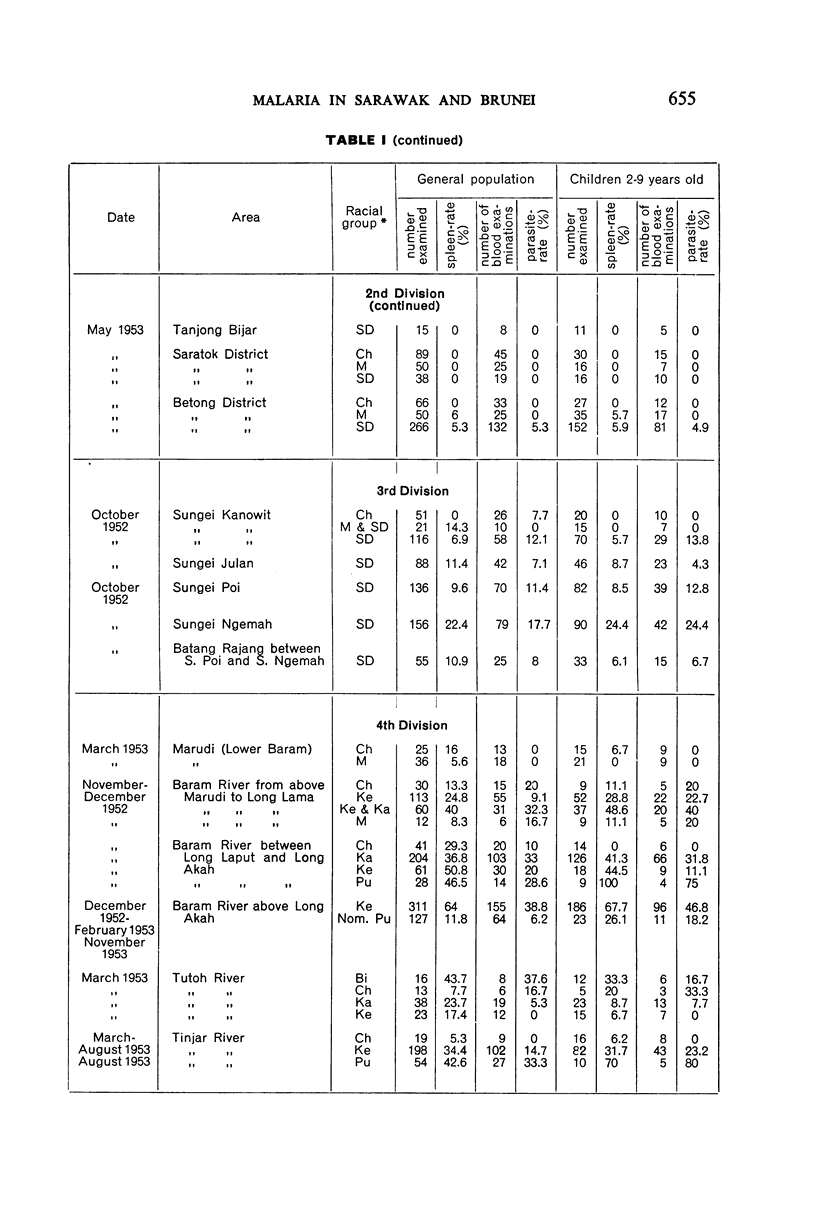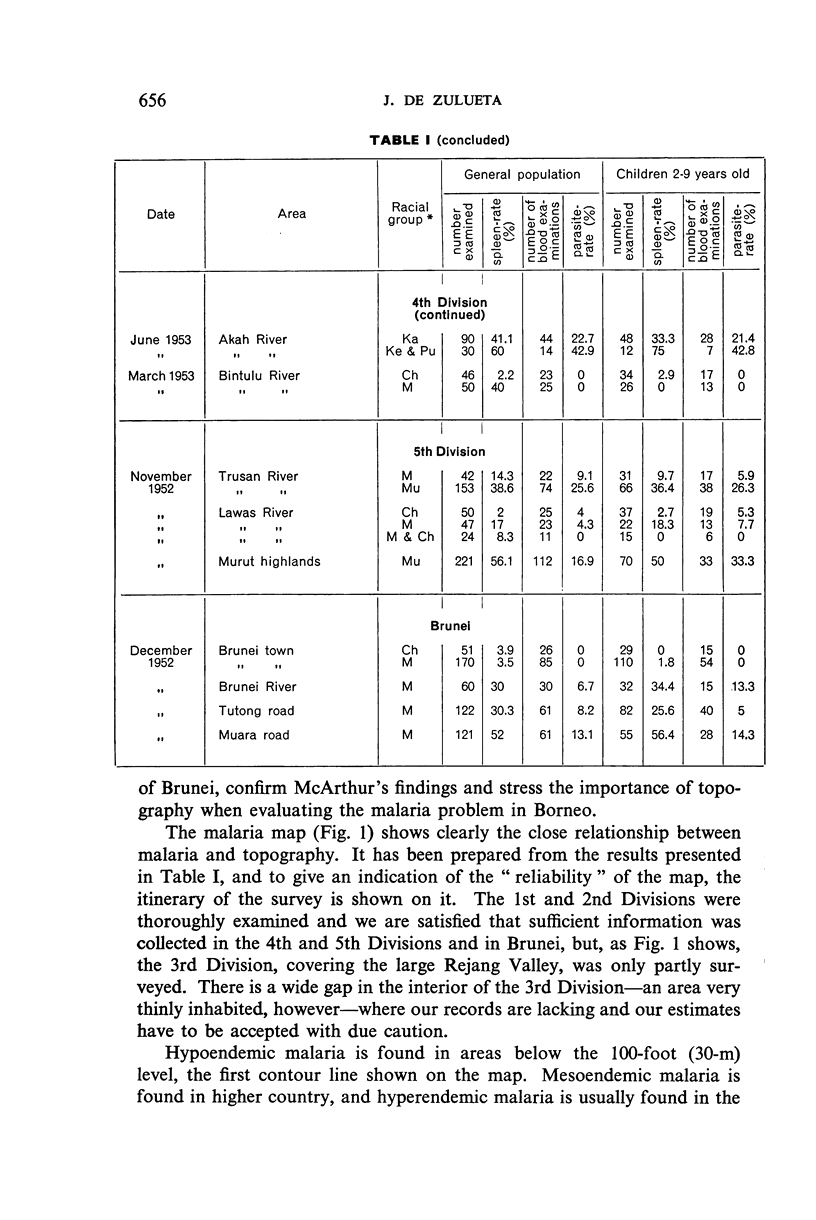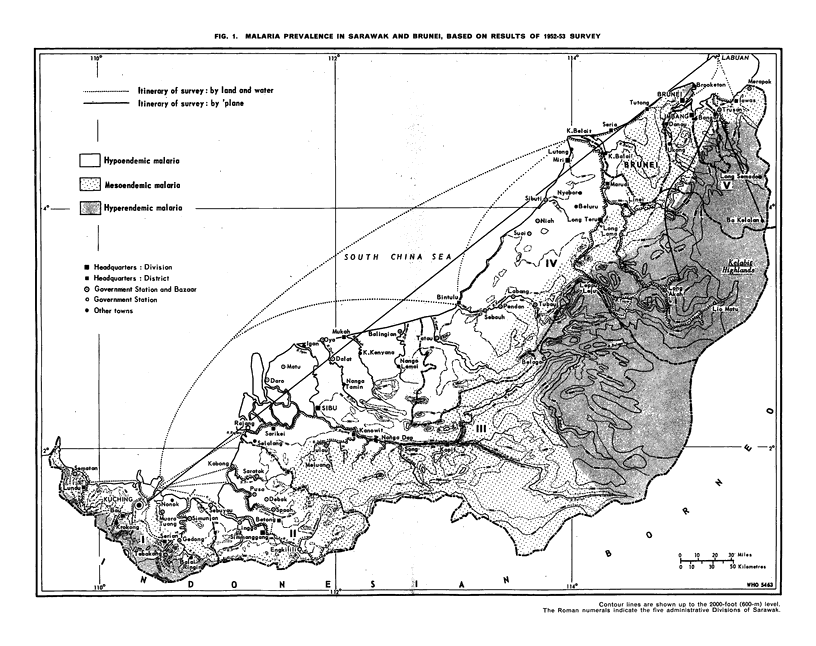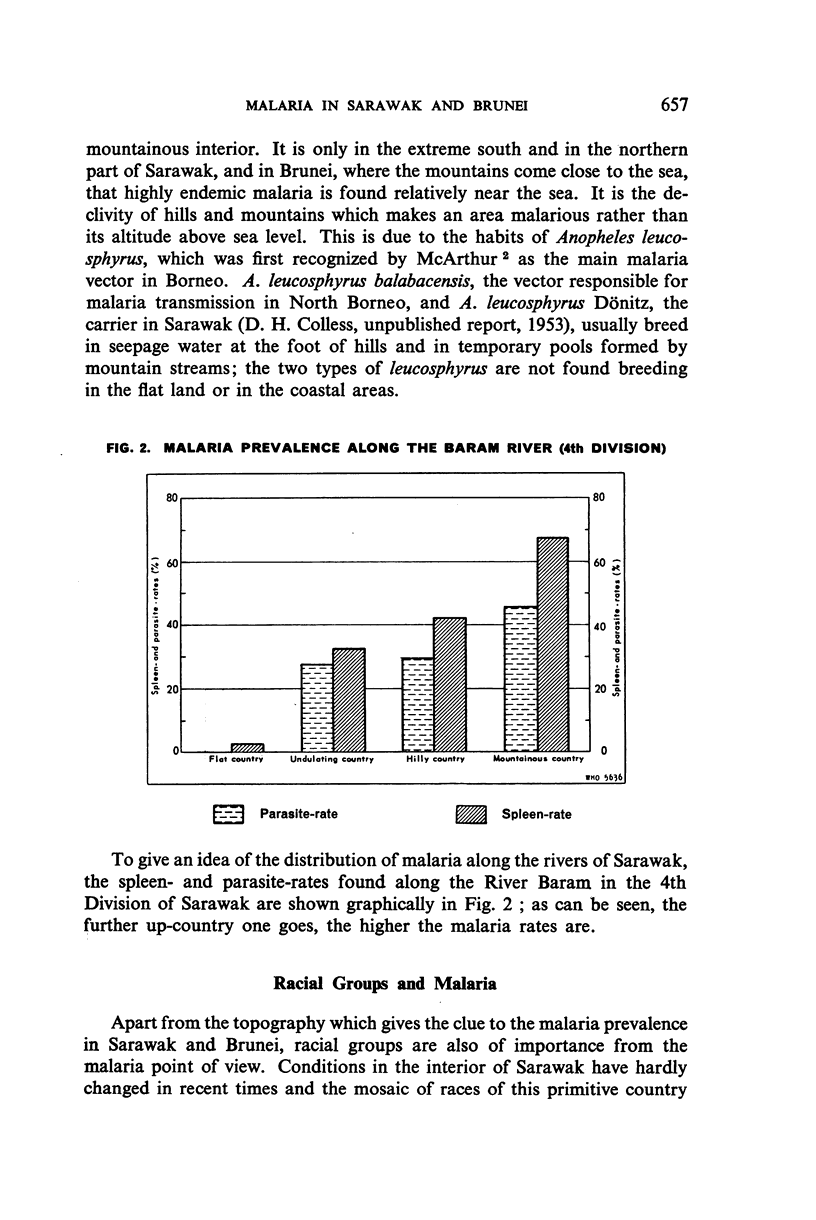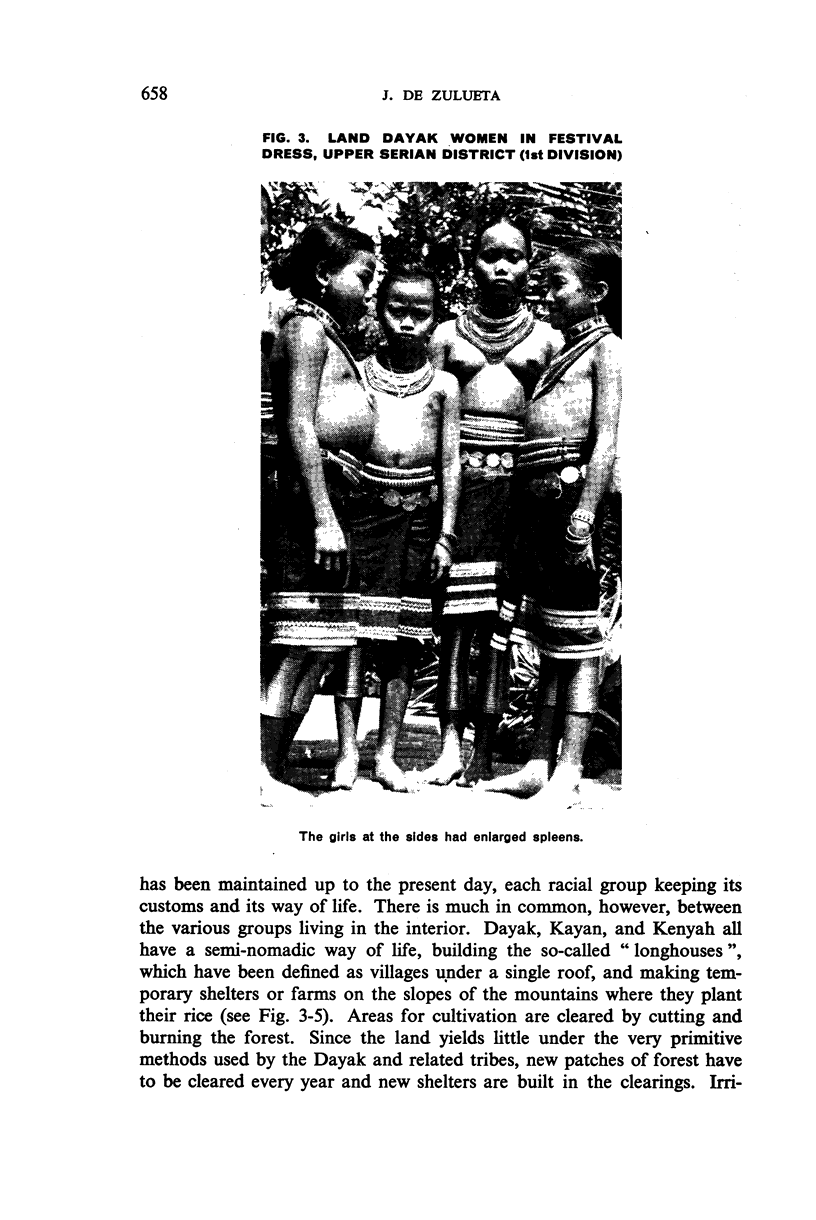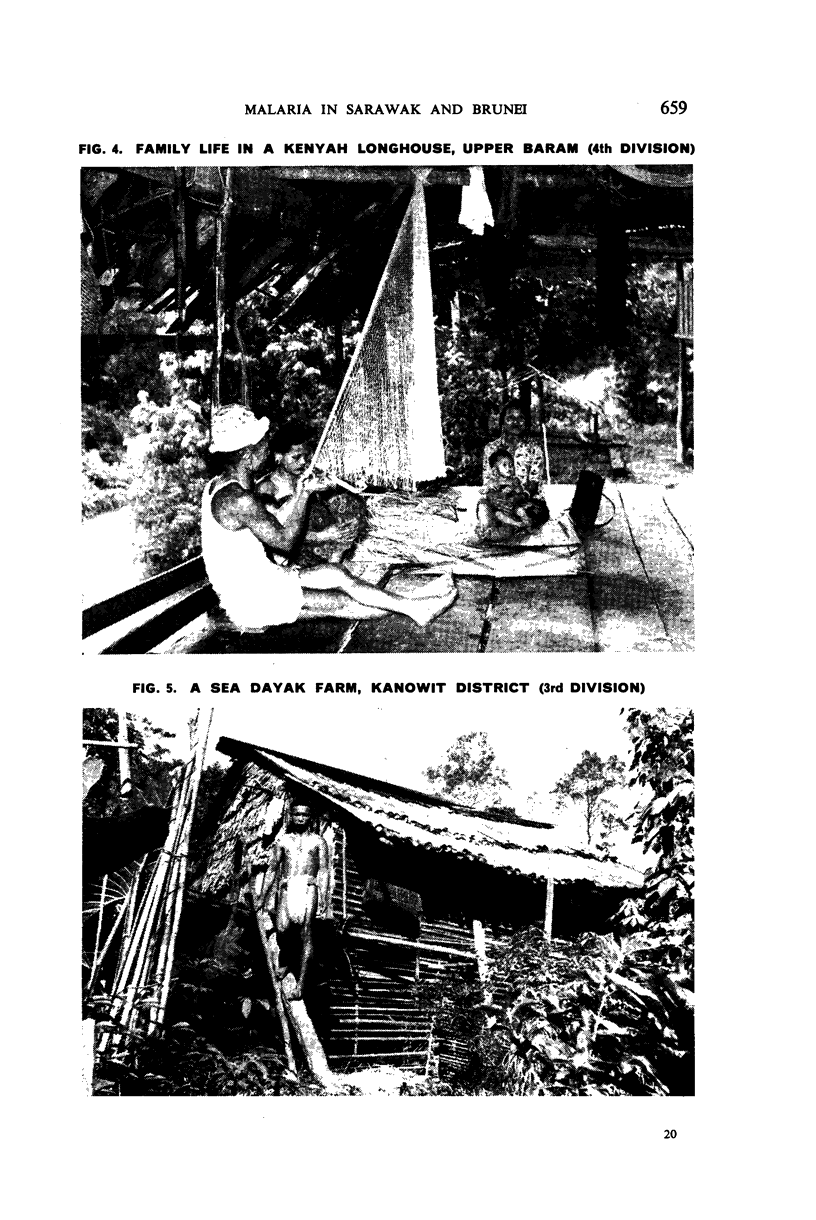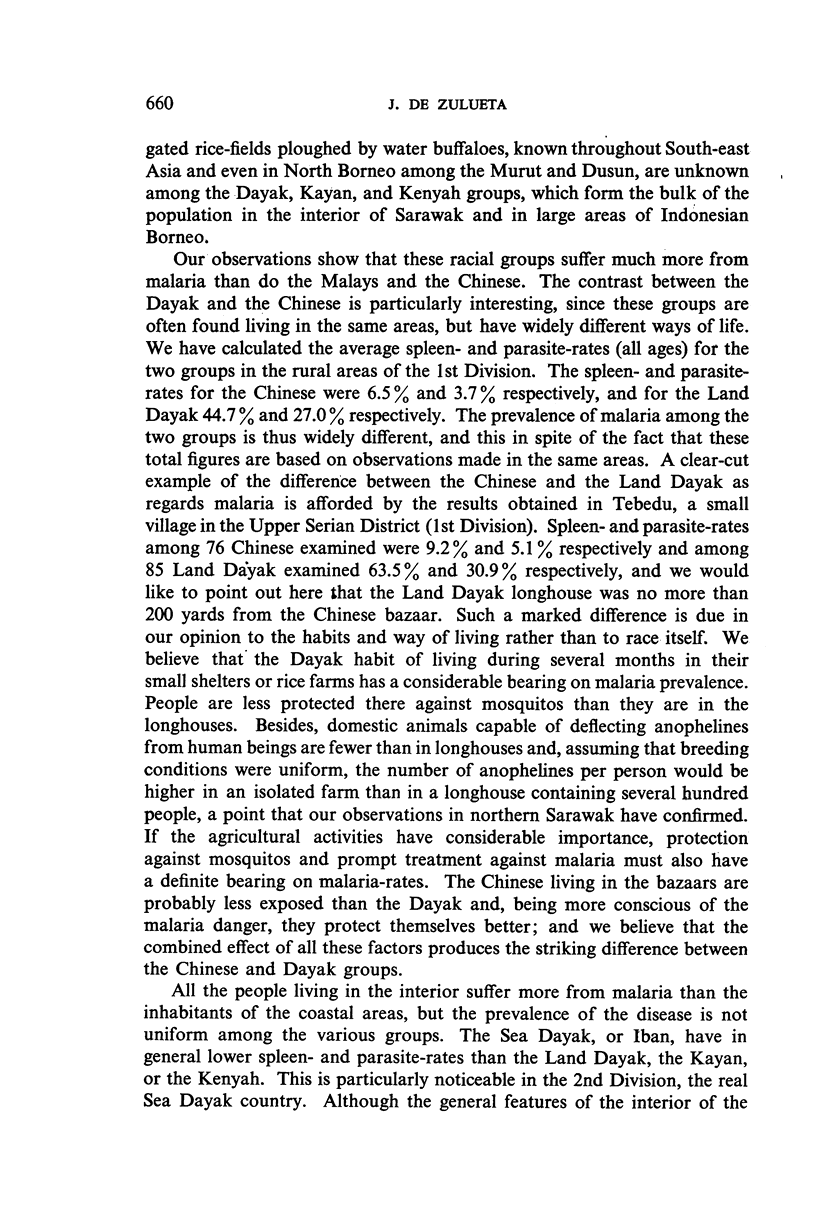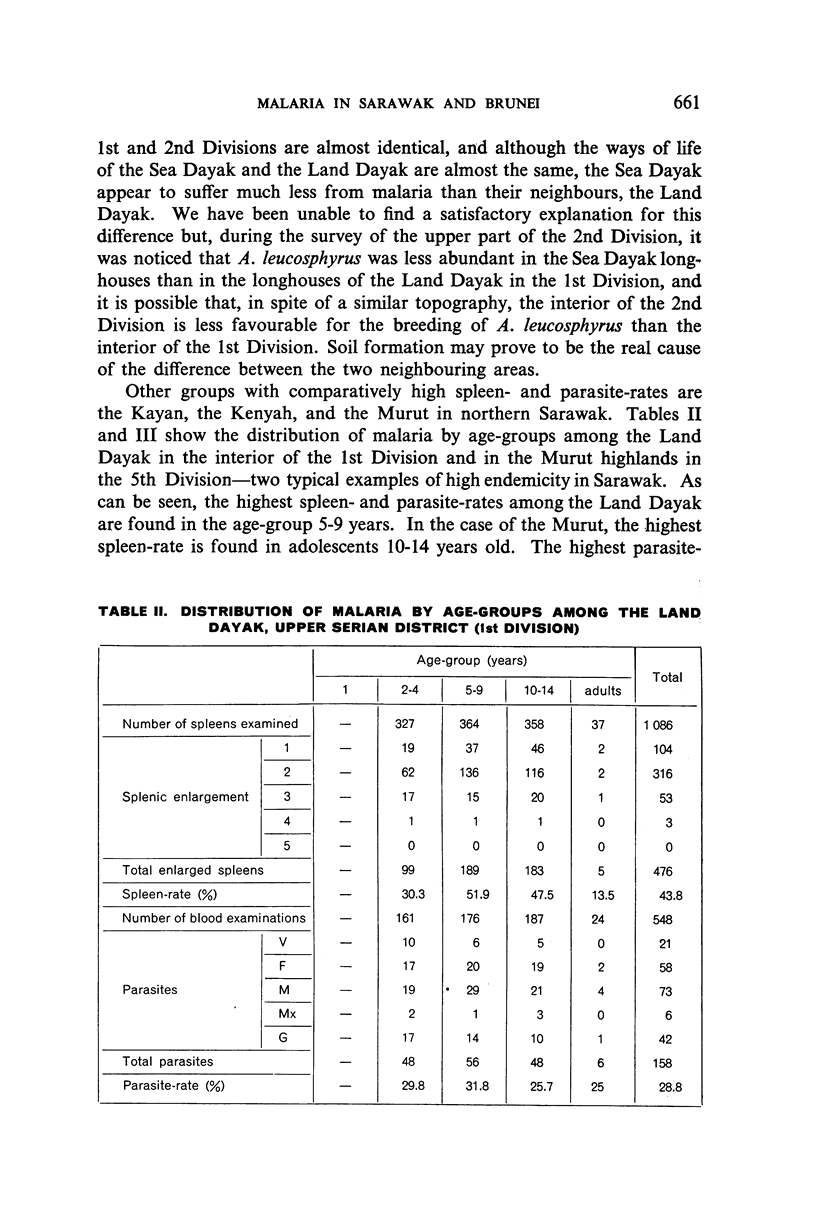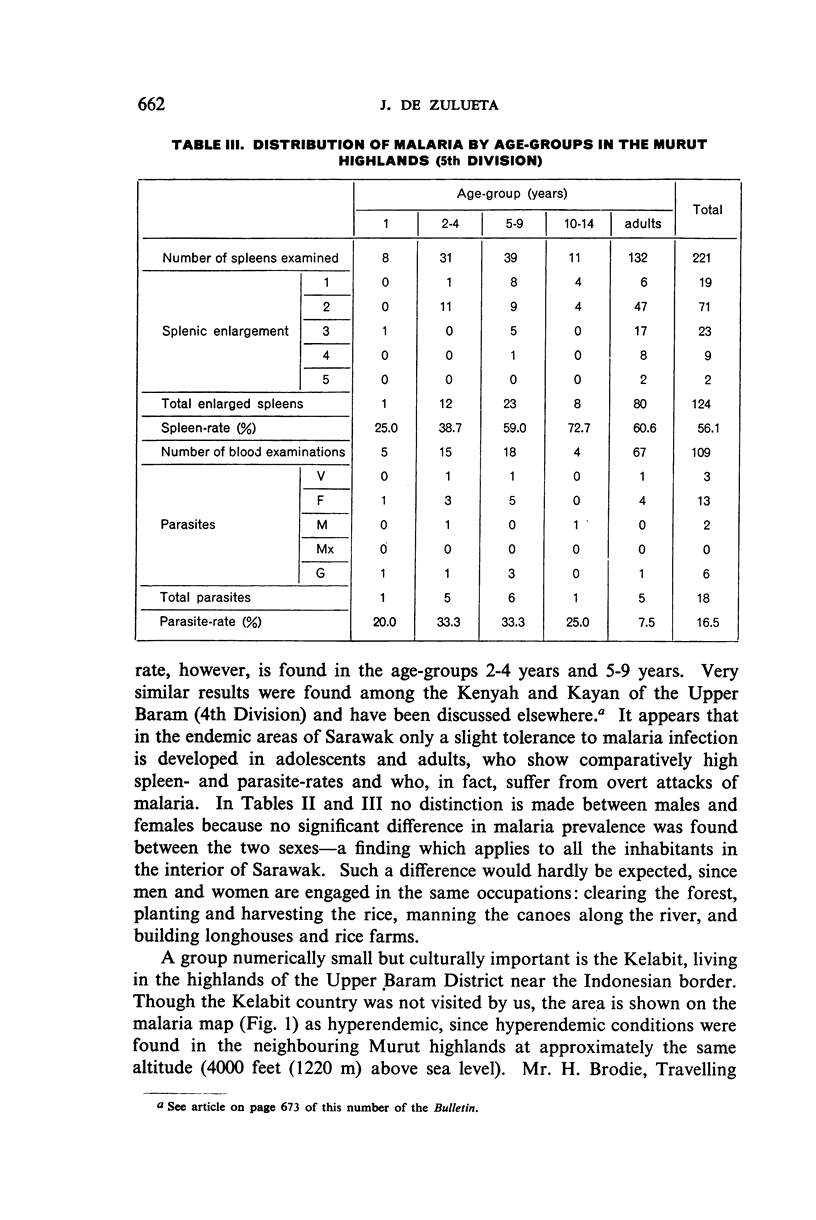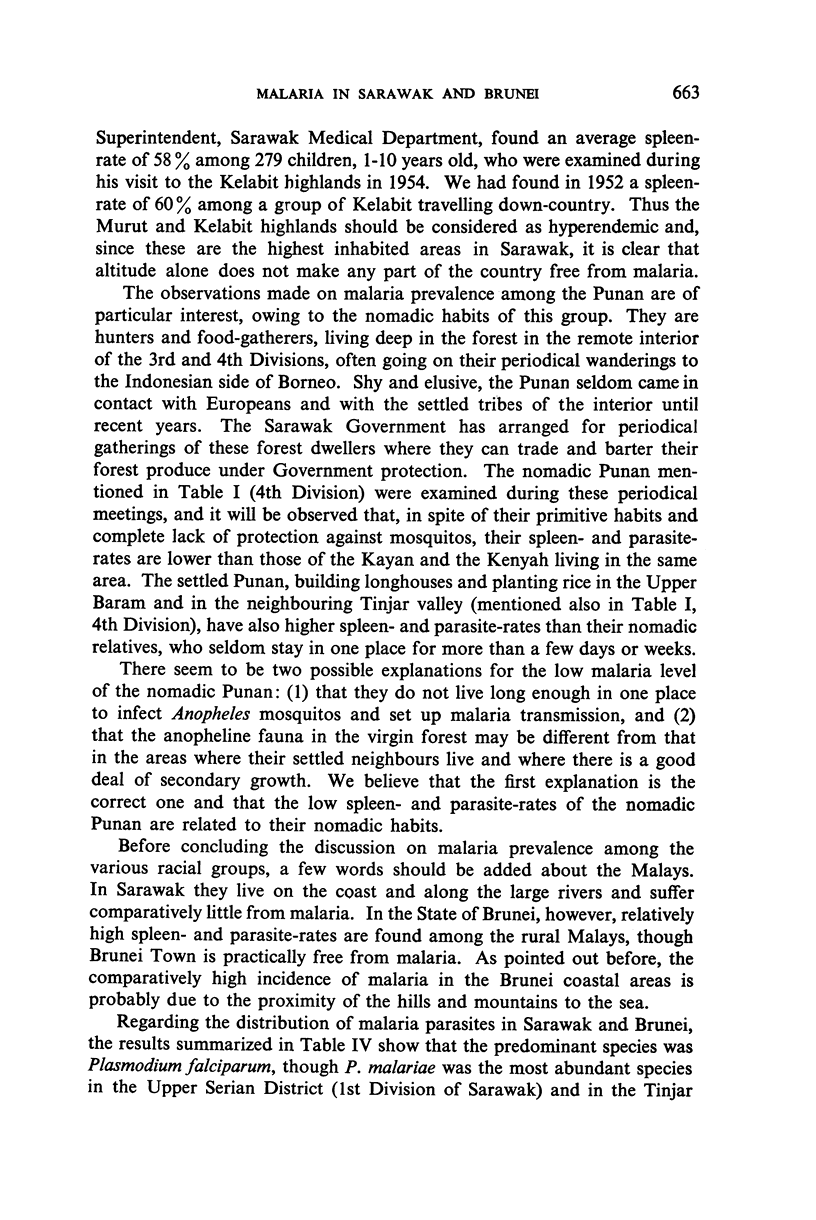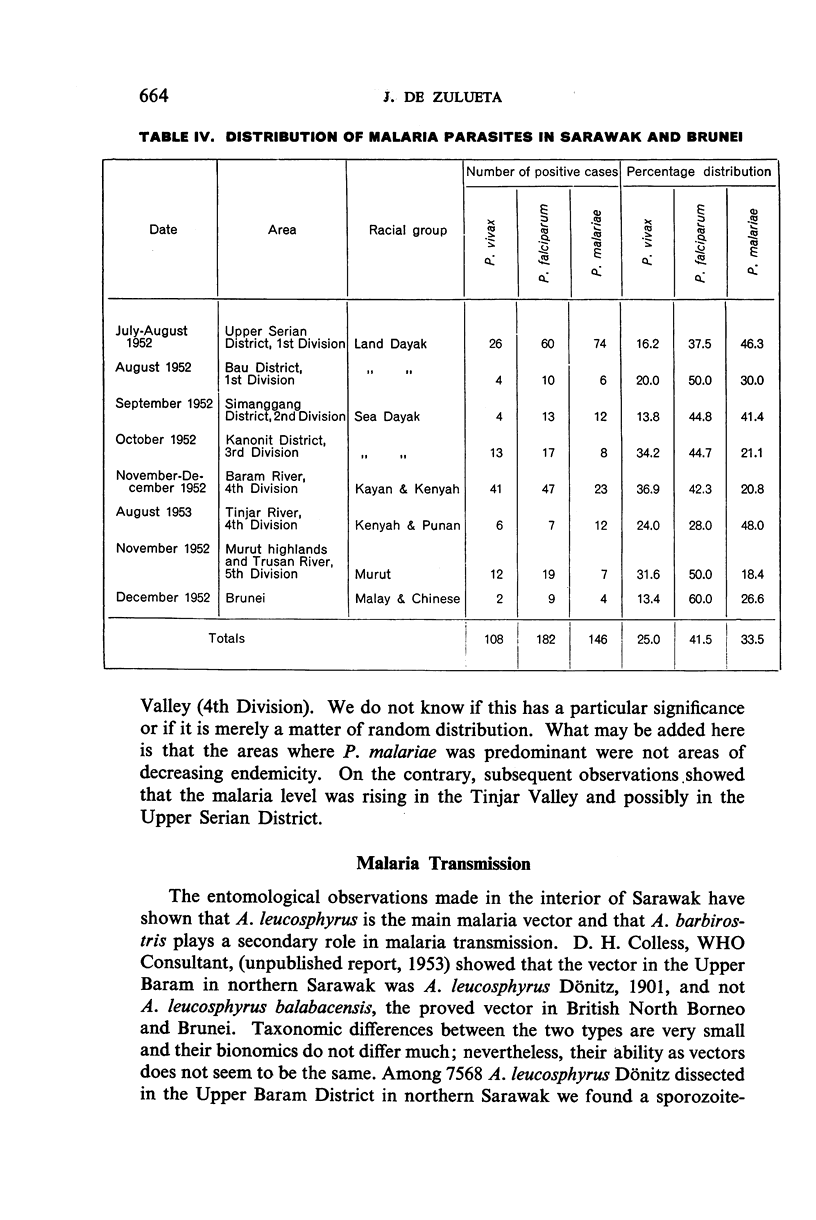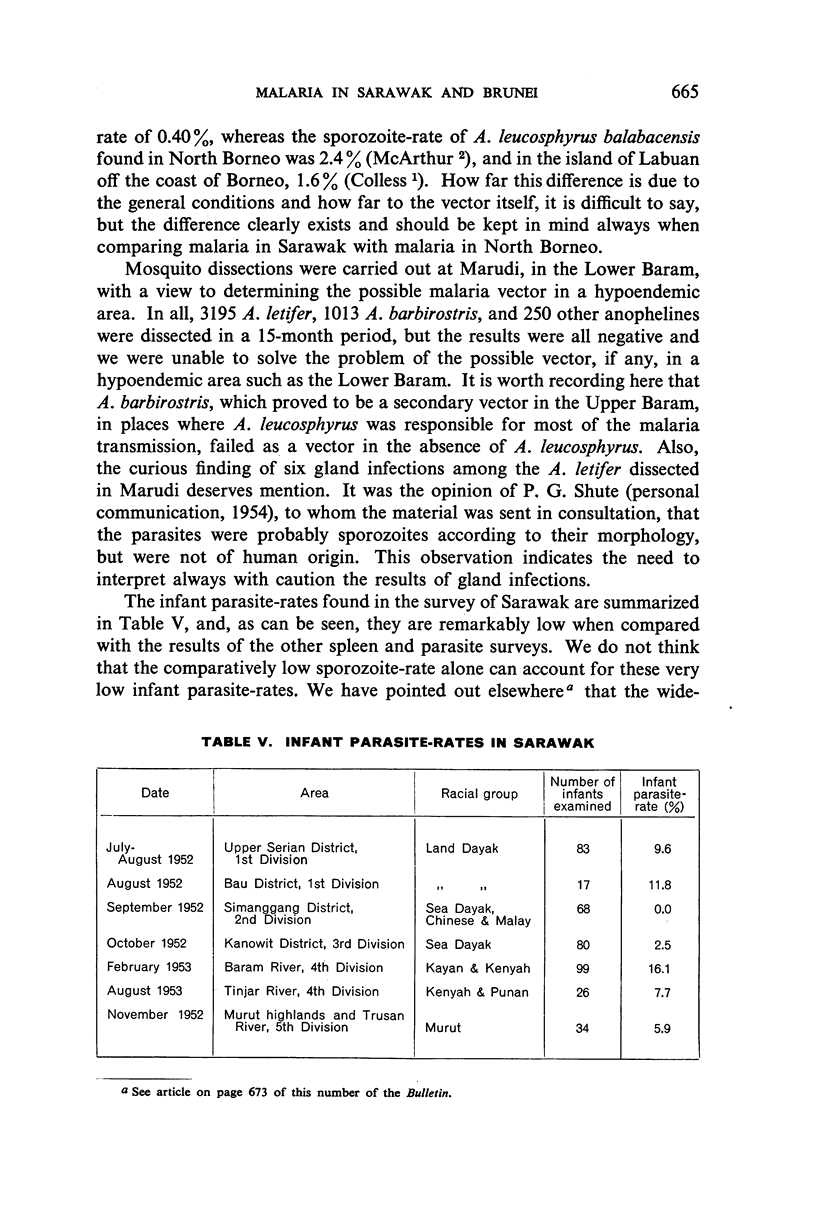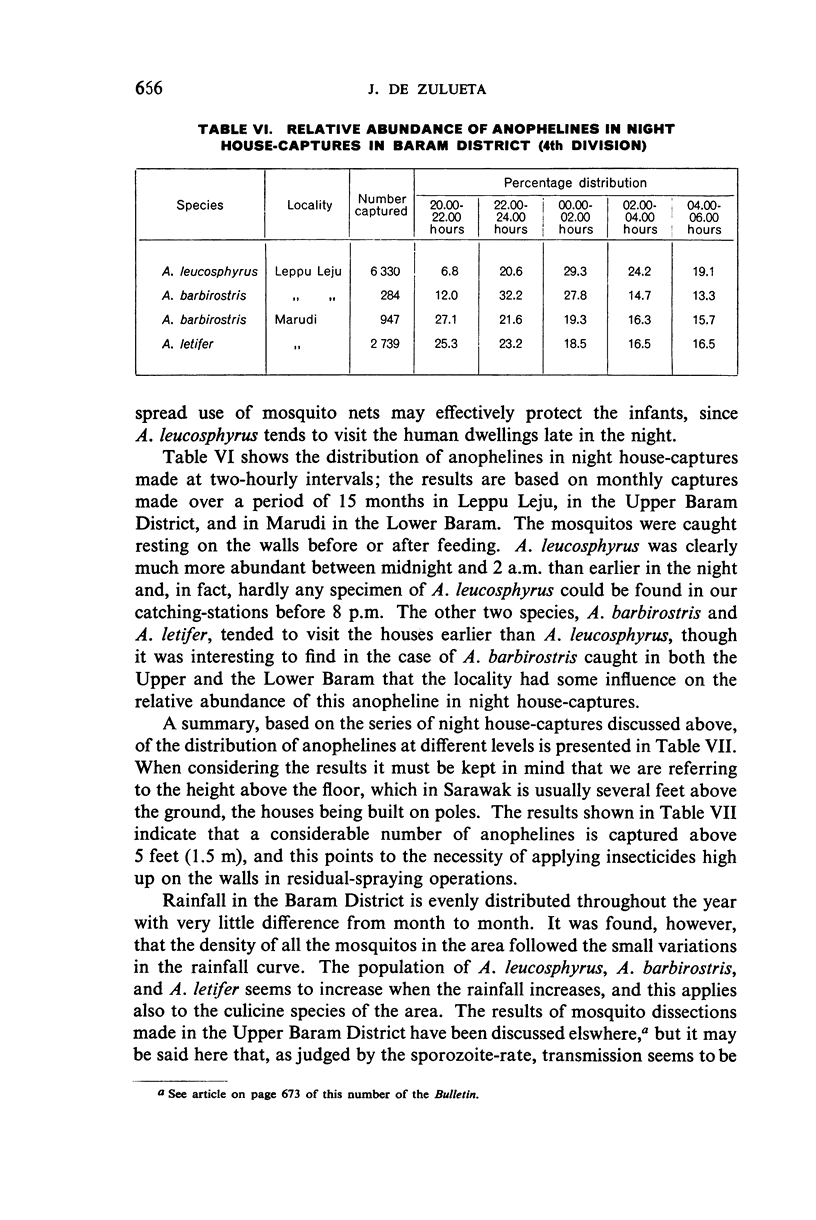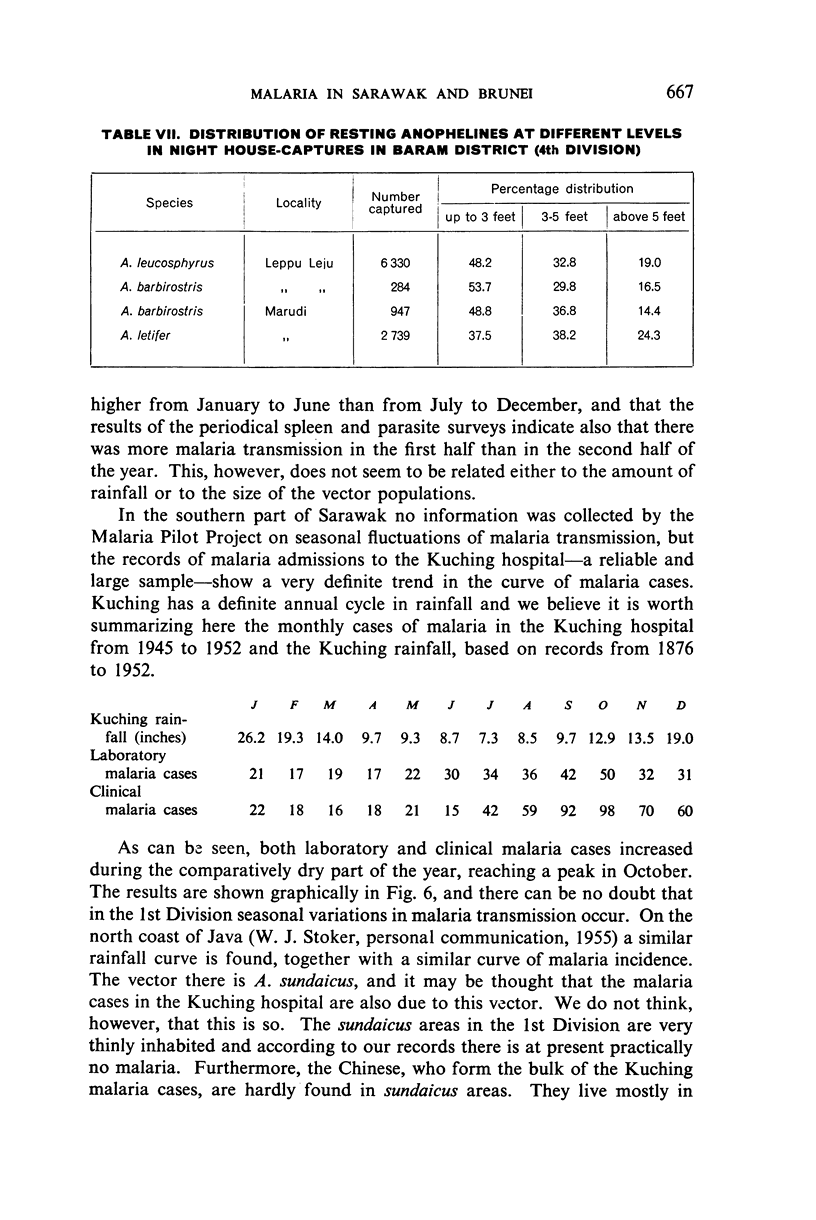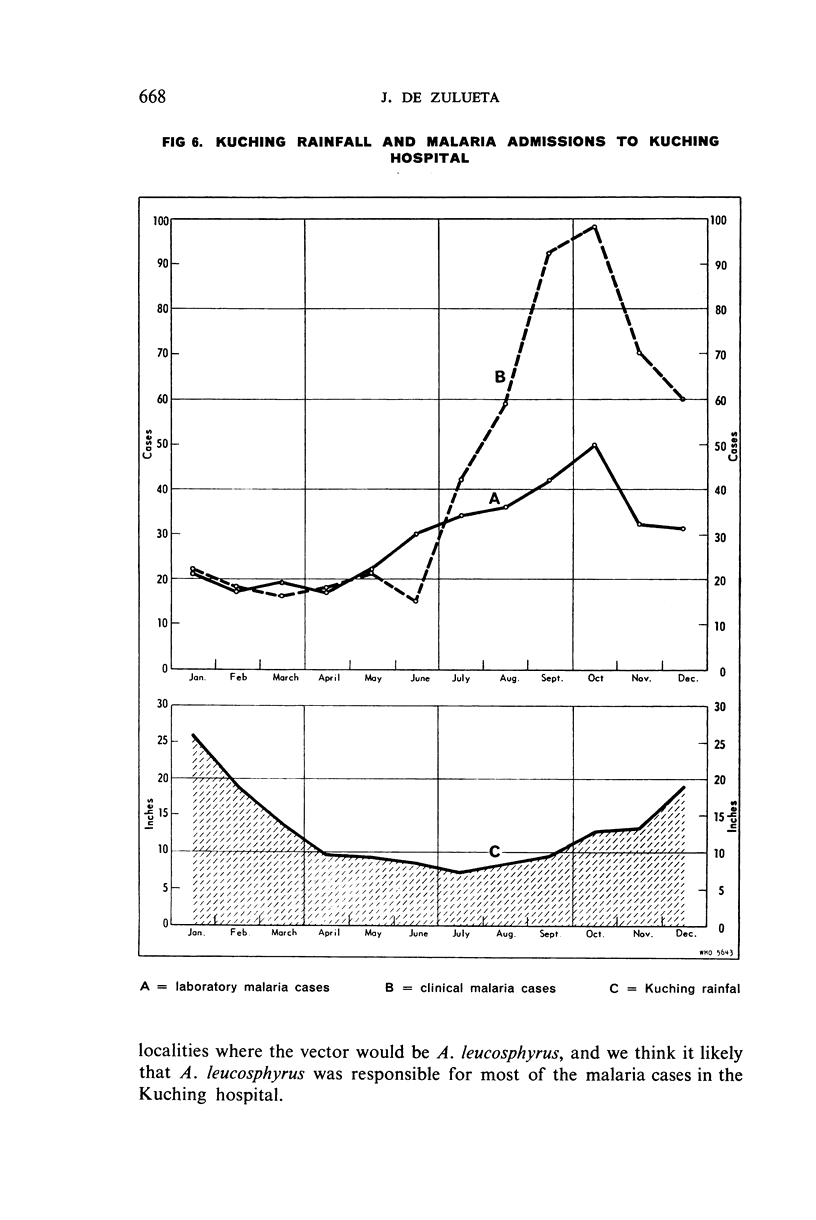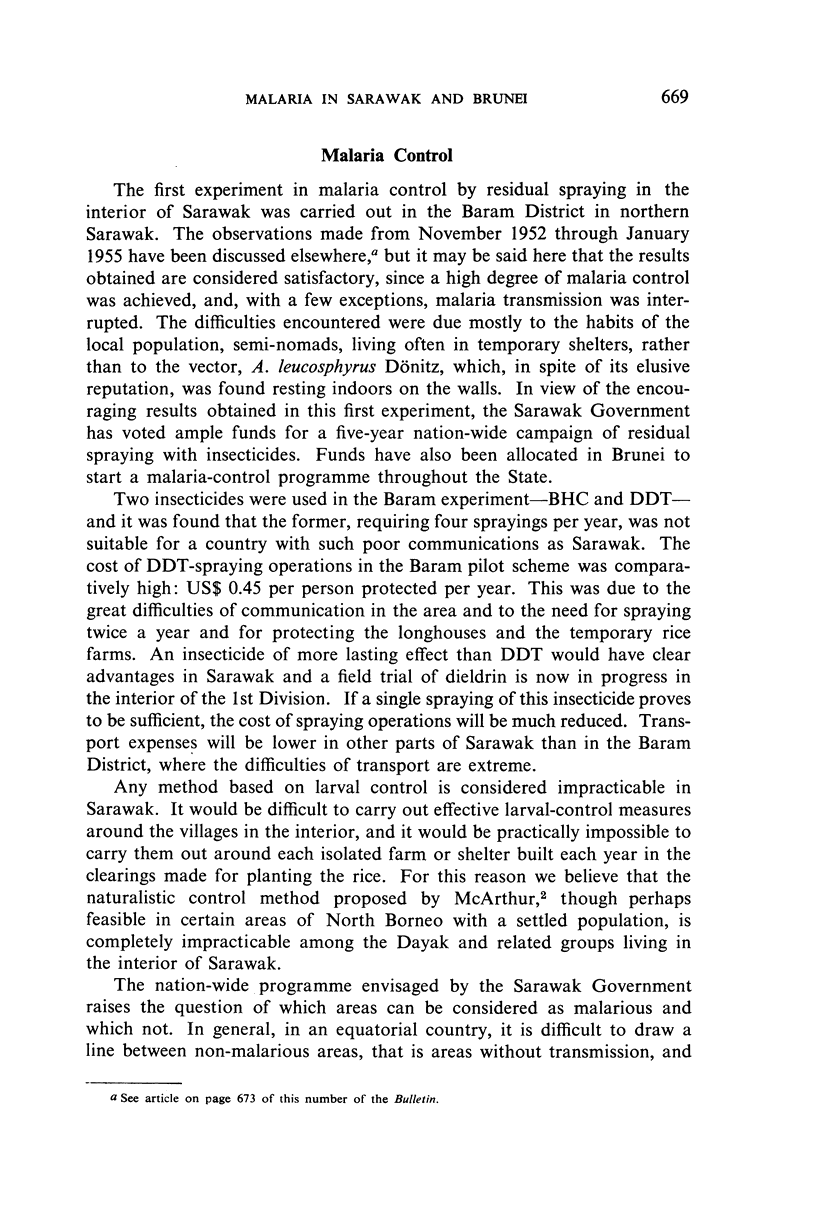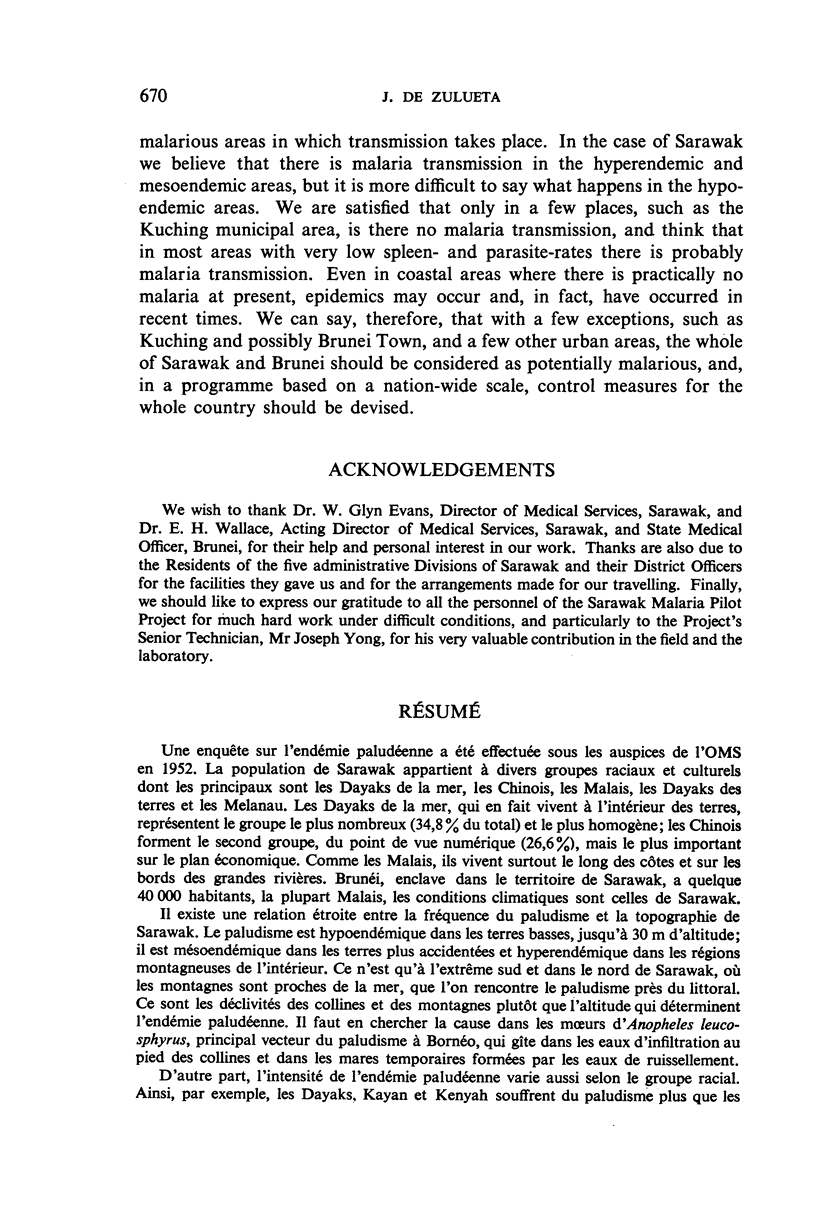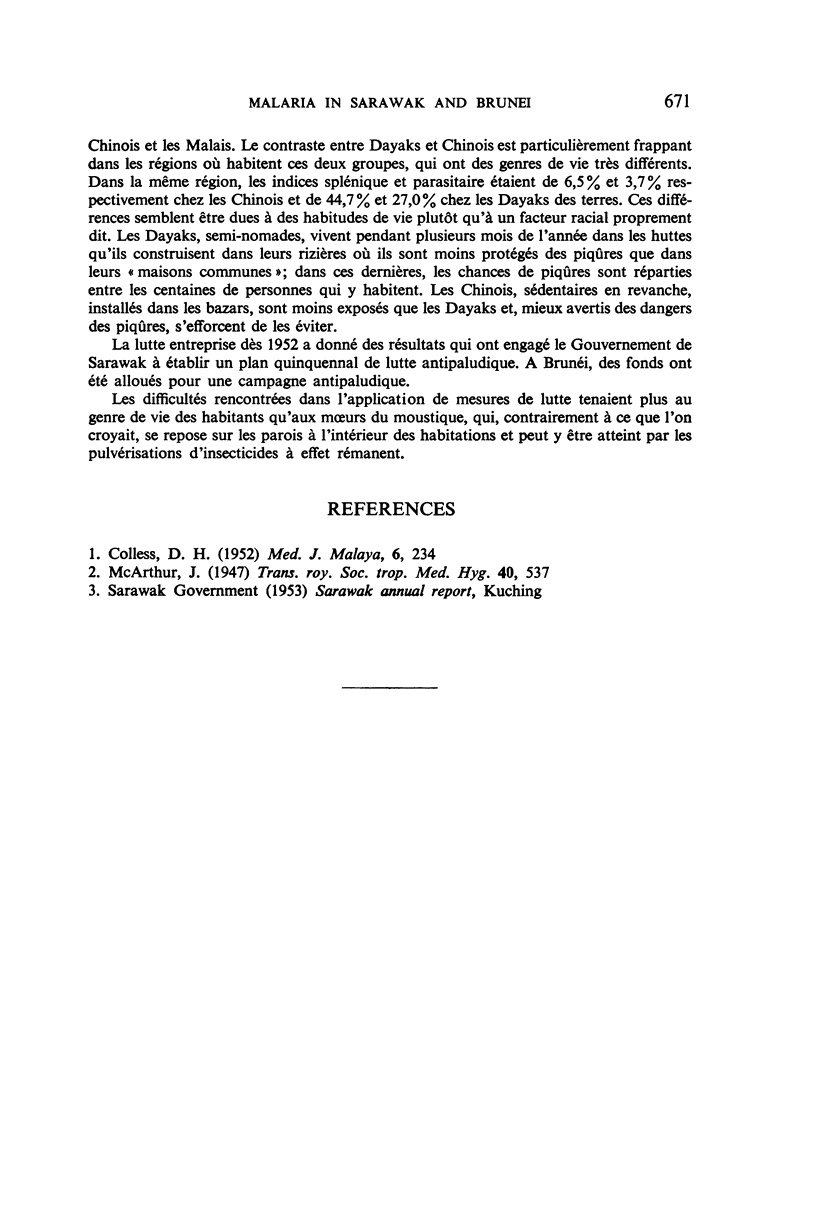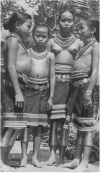Abstract
A general malaria survey of Sarawak and Brunei, two of the territories of British Borneo, is described. Contrary to what was expected in view of the climate and the general conditions, the prevalence of malaria in Sarawak and Brunei proved, on the average, to be low. The coastal areas were found to be practically free from the disease, although epidemics have occurred there in recent years. Malaria was found to be endemic in the hilly and mountainous interior. In fact, topography proved to be an important factor in malaria prevalence, the spleen- and parasite-rates, generally speaking, being higher the more abrupt the country. Differences were also observed in the prevalence among the various racial groups, but these were considered to be due to different habits and customs rather than to race itself.
Entomological studies showed that Anopheles leucosphyrus Dönitz was the main malaria vector in the interior of Sarawak, A. barbirostris playing a secondary role. A. leucosphyrus balabacensis had already been recognized as the malaria vector in Brunei.
The favourable results of a first field trial of residual insecticides are mentioned and plans for a nation-wide malaria-control programme are briefly outlined.
Full text
PDF